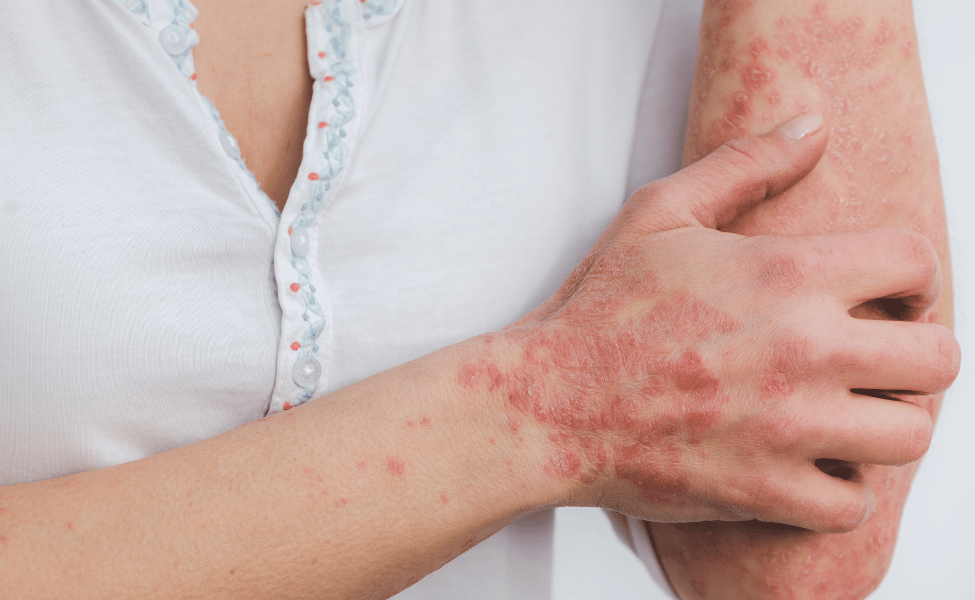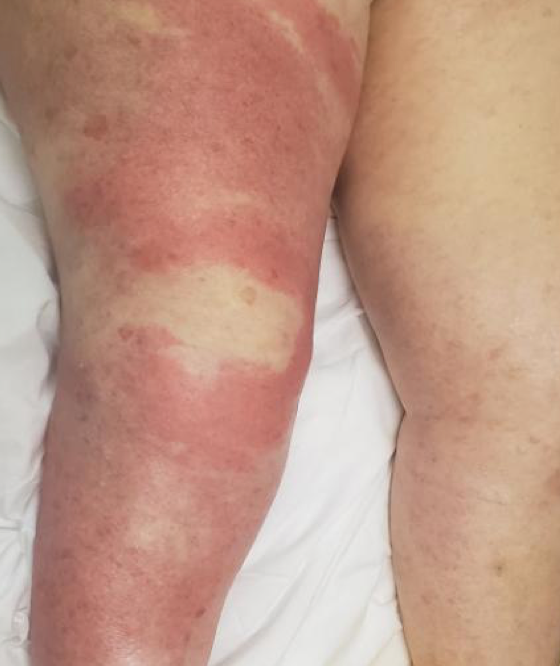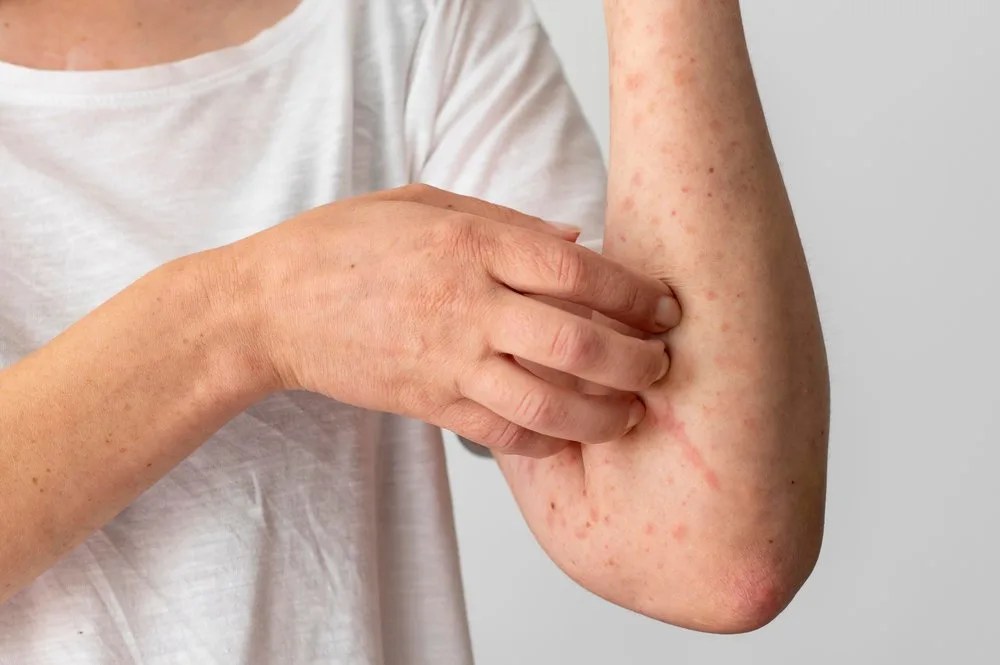Most patients with chronic respiratory diseases like COPD rely on inhaler therapy to maintain quality of life. These medications are considered safe and effective, with side effects usually limited to common issues such as throat irritation or coughing. However, a rare case recently reported in primary care has raised important questions about unexpected risks. A woman developed Sweet syndrome, an uncommon skin disorder, shortly after beginning a new inhaler treatment. This case may represent one of the first times inhaled therapy has been implicated in triggering the condition.

Case Presentation
The patient was a 55-year-old woman with a history of hypertension and chronic obstructive pulmonary disease (COPD). For years, her condition was stable with enalapril and a formoterol inhaler. But as her lung function began to decline, her pulmonologist recommended switching to a new combination inhaler containing indacaterol and glycopyrronium.
Within just 48 hours of starting the new therapy, the patient noticed painful, bright red plaques spreading across her face and neck. She also developed a low-grade fever. Importantly, she reported no new cosmetic products, dietary changes, or recent illnesses. While she had been outdoors, she had used proper sun protection, ruling out a typical sun reaction.
Due to the severity of her skin changes, she was urgently referred to a dermatologist. The new inhaler was discontinued immediately while further tests were performed.
Diagnostic Findings
Blood tests ruled out infections and common autoimmune conditions. To confirm the cause, a skin biopsy was conducted. The results pointed to Sweet syndrome, also known as acute febrile neutrophilic dermatosis.
The diagnosis explained her symptoms: sudden painful, erythematous (red and inflamed) skin lesions, fever, and tenderness. Following the biopsy confirmation, she was prescribed oral corticosteroids, which led to rapid improvement—her fever subsided and skin plaques began healing within two days.
What Is Sweet Syndrome?
Sweet syndrome is a rare inflammatory condition first described in 1964. Its hallmark features include:
-
Sudden onset of painful red papules or plaques, often affecting the
face, neck, upper torso, and arms.
-
Accompanying systemic symptoms such as
fever, fatigue, and elevated white blood cell counts.
-
Histological findings of
dense neutrophilic infiltrationin the skin without signs of infection.
The exact cause is not fully understood, but it is believed to result from immune system dysregulation and cytokine overproduction. Common triggers include:
- Infections(especially upper respiratory and gastrointestinal).
- Cancers, particularly blood-related malignancies.
- Medications, such as antibiotics, antiepileptics, and certain vaccines.
Corticosteroids are considered the first-line treatment, often providing dramatic improvement within days.

Why This Case Is Unique
What makes this case medically significant is the suspected link between an inhaled COPD therapy and Sweet syndrome. While drug-induced Sweet syndrome is recognized, previously reported cases have almost always involved oral or injectable medications. To date, inhaled therapies have not been documented as triggers.
This raises new questions about whether inhaled drug particles—though designed for local action in the lungs—could, in rare situations, trigger systemic immune reactions.
The Role of Primary Care
Sweet syndrome is uncommon, and its initial symptoms can resemble more common conditions such as:
- Contact dermatitis
- Lupus rash
- Urticaria (hives)
- Rosacea flare-ups
Because of this overlap, early recognition depends heavily on attentive primary care providers. In this case, the general practitioner recognized the unusual severity of the rash and fever, and quickly referred the patient to dermatology. That timely decision led to an accurate diagnosis and effective treatment.

Broader Implications for Clinicians
While this appears to be a rare occurrence, the case underscores important clinical lessons:
- Stay alert after medication changes.Any new or worsening skin eruption within days of starting a drug should be carefully documented and investigated.
- Think beyond common side effects.Even familiar medications like inhalers can rarely trigger unexpected immune responses.
- Early referrals matter.Dermatology input and biopsy results were crucial in reaching the correct diagnosis.
- Educate patients.Encouraging patients to report unusual reactions promptly can help prevent delays in treatment.
Conclusion
This unusual case of Sweet syndrome following inhaler therapy highlights the importance of vigilance in both prescribing and monitoring treatment. While inhaled medications remain overwhelmingly safe and beneficial for patients with chronic lung conditions, this example serves as a reminder that rare adverse events can occur.
For clinicians, recognizing atypical triggers of Sweet syndrome expands diagnostic awareness and ensures patients receive timely care. For patients, the case reinforces why open communication about new or unusual symptoms is essential.
Ultimately, this case broadens the medical community’s understanding of Sweet syndrome and adds a new dimension to the potential risks associated with inhaled therapies—even if such occurrences remain exceedingly rare.